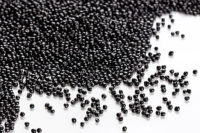
Large R&D-driven companies are reducing commercialization costs and increasing speed to market by thinking in terms of whole new markets rather than individual products. The idea is to take a new product or technology and quickly launch it into one or several new markets simultaneously. Success comes in bunches and with dramatic speed.

Challenge
One of the biggest obstacles to such a strategy is accessing markets where a company is not a recognized player. Dow Chemical usually sends salespeople to call on purchasing agents but found that approach painfully slow for developmental sales of new technology. Because Dow has many products and technologies in its R&D pipeline, it needs quick “go” or “no go” answers to guide investment decisions. Getting the right answers fast enables the company to focus its resources on innovative products and technologies that can generate hundreds of millions of dollars in new revenues.
Solution
To commercialize its Insite technology (a new way to produce plastics) into the adhesives, sealants and coatings markets, Dow decided that instead of starting at the bottom by knocking on the usual doors, it would start at the top by accessing high-powered decision makers from leading companies in high-potential fields. To do this, it brought in a specialized intermediary, ISIS International, that could generate such access “on demand” through a systematic non-traditional process. In this process, the goal was first to individually brief 150 or so industry opinion leaders (decision-making technical executives from non-competing top companies in major industries) on the properties of Insite-derived polymers. From that group, 14 who saw strong commercial potential were brought together at a confidential summit conference to discuss high-value commercial applications of these new polymers.Why would such high-level people agree to participate? Because it gave them the advantage of having first crack at the newest polymer technology in their field.
In the case of Insite, summit panelists estimated that the near-term value of the new materials to their companies alone would be more than $400 million annually.
This approach has been so successful for Dow and other large companies that it was covered last summer in an article in the Harvard Business Review (“Breaking out of the Innovation Box,” August 2002, p. 77-83, by John D. Wolpert, who leads IBM’s Extreme Blue, an innovation incubator).
Kurt Swogger, vice president of R&D for Dow’s Olefins and Elastomers Business, says that ISIS gives them account penetration they could not achieve on their own. “They manage to line up the senior decision makers, not just from purchasing, but from sales and marketing and research, so that when you actually go in for the first time to meet them, ISIS has the team there who can make the decision.”
Advantages
R&D-driven companies such as Dow can bring new products to new or familiar markets much faster and more profitably. At a time when CEOs are quick to turn off funding for R&D projects, this approach enables companies to pinpoint which projects to push and which to eliminate.
Sidebar:
Case Study
H.B. Fuller, a world leader in the adhesives field, was a panelist at the Insite Summit. At the summit, Dow’s identity was not revealed, nor was that of Insite - just the technical data describing the polymers enabled by Insite technology. The H.B. Fuller panelist, John Greenzweig, then one of Fuller’s upper management hot melt experts, was intrigued by the ability of the new polymer to offer performance advantages over standard hot-melt adhesives. He had visions of a whole new line of adhesives with bonding and processing advantages. He later brought other Fuller executives and scientists into the picture and two blockbuster product lines were developed: the Advantra and Clarity lines of hot-melt adhesives.Overall, H.B. Fuller estimated that the commercial value of the new polymer to its company could be in excess of $100 million annually.
Greenzweig noted, “We were already working on something similar with the chemical division of a major oil company, when we learned about the Dow innovation. We liked its properties better, plus the fact that Dow was interested in working with us to develop the polymers for specific applications. If I had not attended that summit, we surely would have gone with the other product and, most likely, one of our competitors would have developed the Dow polymer, to our disadvantage.”
Dow has recently flip-flopped this approach to set direction for new product development: going into new markets, obtaining direction from decision makers by way of the ISIS approach, learning what needs are not being met, and then going back to the lab and developing products to meet those needs. One such example is the recently introduced Dow XLA Elastic Fibers that are aimed at new stretch fabric markets where DuPont’s Lycra has difficulty working.
Dow now has a two-barreled approach to the marketplace: build the better mousetrap first and then find the right high-value markets for introduction; or go to the market, learn what kind of new mousetraps are needed, and invent them.




